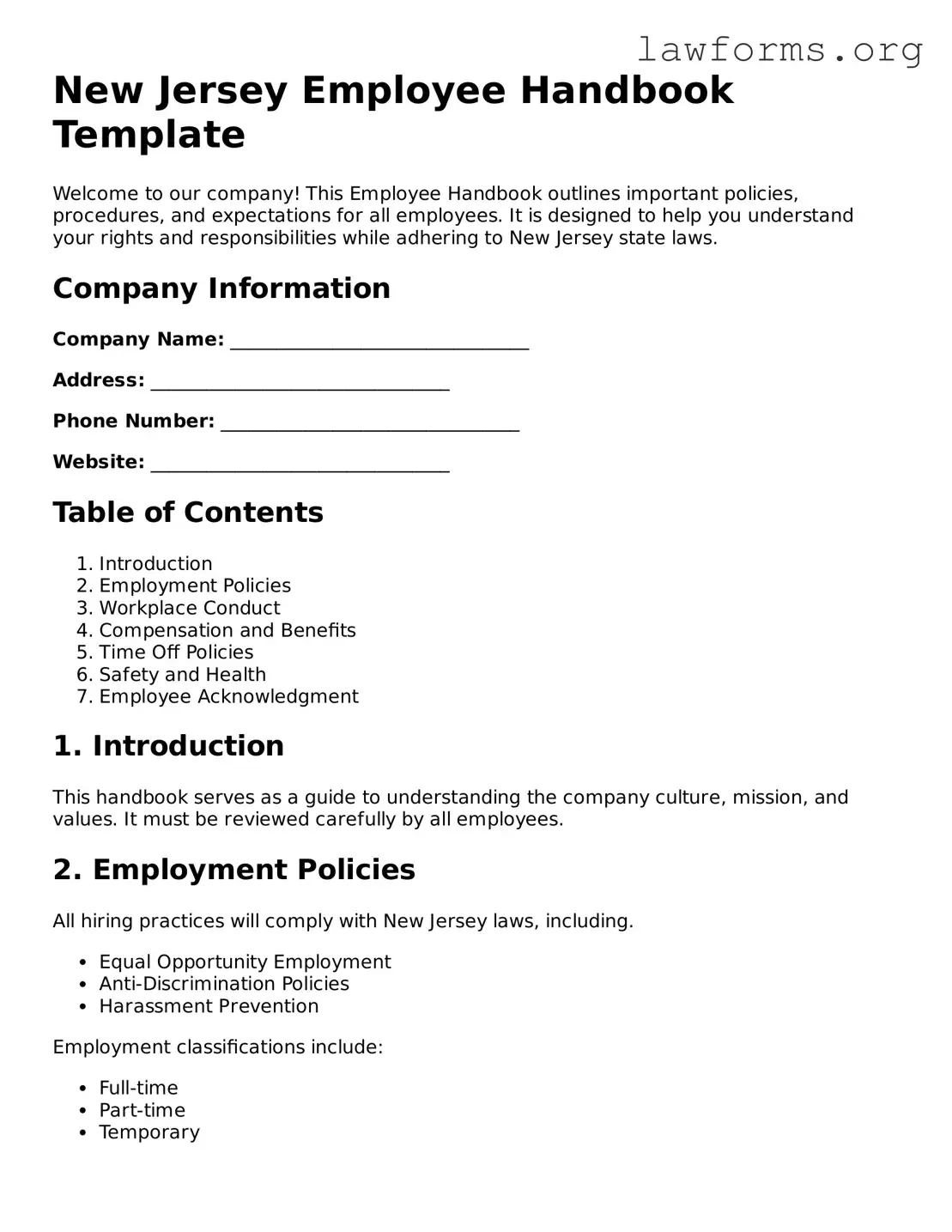New Jersey Employee Handbook Template
Welcome to our company! This Employee Handbook outlines important policies, procedures, and expectations for all employees. It is designed to help you understand your rights and responsibilities while adhering to New Jersey state laws.
Company Information
Company Name: ________________________________
Address: ________________________________
Phone Number: ________________________________
Website: ________________________________
Table of Contents
- Introduction
- Employment Policies
- Workplace Conduct
- Compensation and Benefits
- Time Off Policies
- Safety and Health
- Employee Acknowledgment
1. Introduction
This handbook serves as a guide to understanding the company culture, mission, and values. It must be reviewed carefully by all employees.
2. Employment Policies
All hiring practices will comply with New Jersey laws, including.
- Equal Opportunity Employment
- Anti-Discrimination Policies
- Harassment Prevention
Employment classifications include:
- Full-time
- Part-time
- Temporary
3. Workplace Conduct
Employees are expected to maintain a professional demeanor at all times. This includes:
- Treating colleagues and clients with respect
- Adhering to the company's code of conduct
- Complying with attendance policies
4. Compensation and Benefits
Our company is committed to providing competitive compensation packages. Employees can expect:
- Regular salary reviews
- Health insurance options
- Retirement plan contributions
5. Time Off Policies
Employees are entitled to various types of leave, which include:
- Paid time off (PTO)
- Sick leave
- Family leave as per New Jersey Family Leave Act
6. Safety and Health
Employee safety is a top priority. In accordance with New Jersey regulations, we maintain a safe workplace by:
- Conducting regular safety training
- Providing adequate safety equipment
- Encouraging reporting of unsafe conditions
7. Employee Acknowledgment
All employees are required to sign an acknowledgment form to confirm that they have read and understood the handbook. This form can be found on the last page of this handbook.
Thank you for being a part of our company! We are committed to supporting your growth and success.
Employee Acknowledgment Form
I, ________________________________, acknowledge that I have received and read the Employee Handbook. I understand the policies and guidelines contained within.
Signature: ________________________________
Date: ________________________________
